The Australorp chicken breed was developed in Australia in the early 1900s. Their name combines the words “Australia” and “Orpington,” as they were bred from Black Orpingtons imported from England. Australorps quickly rose to popularity due to their large size, cold hardiness, and ability to lay large, brown eggs. Today, they are one of the more popular chicken breeds.
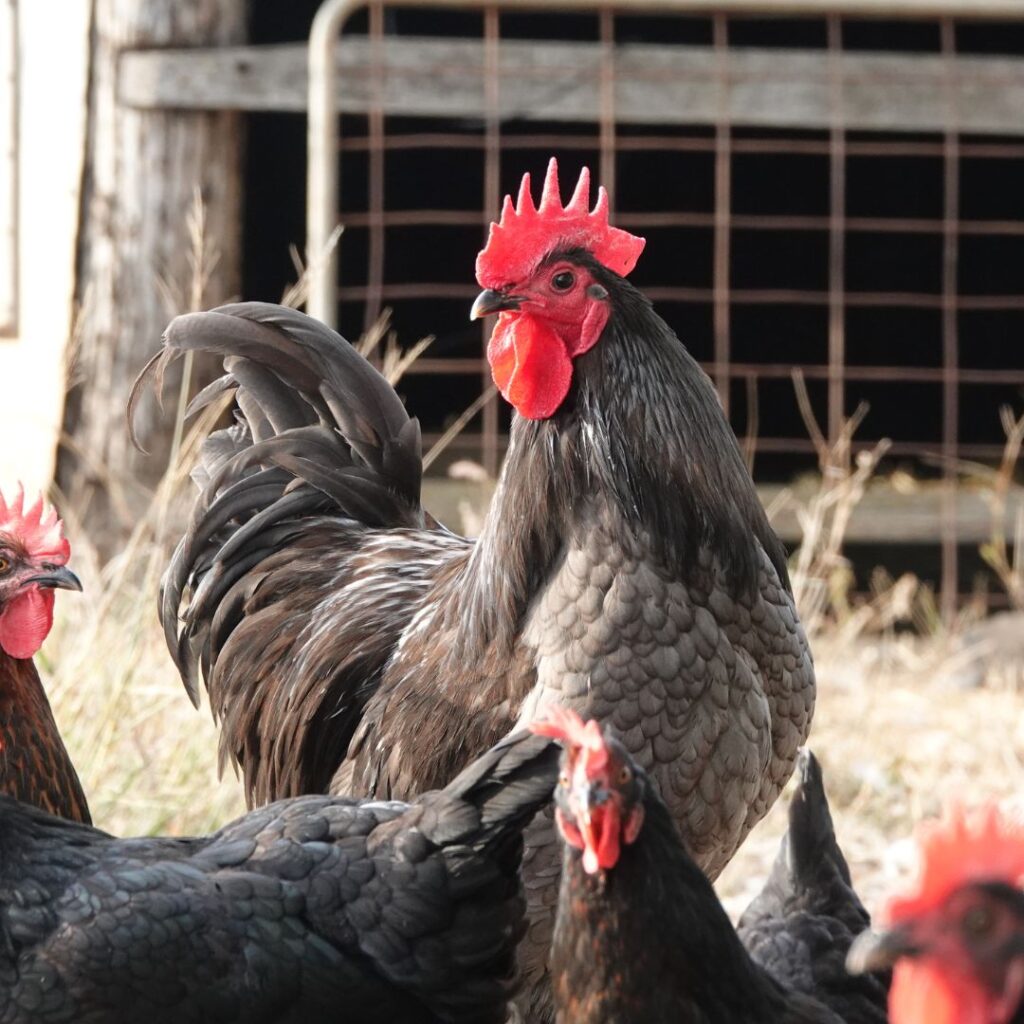
History of the Australorp Chickens
The Australorp chicken breed was first developed in Australia in the early 1900s. Their name combines the words “Australia” and “Orpington,” as they were bred from Black Orpingtons imported from England.
Australorps quickly rose to popularity due to their large size, cold hardiness, and ability to lay large, brown eggs.
When the Black Orpington chicken was imported to Australia in the late 1800s, the Australians immediately took notice of their prolific egg-laying ability.
To improve upon this trait, they were outcrossed with Minorca, White Leghorn breed, and Langshan breed to create the ideal production chicken.
Note: The White Leghorn was the only white egg-laying breed in this combination, yet their ability to consistently lay eggs in all climates made them an ideal species.
This dedication paid off – in 1902, Black Orpingtons dominated a six-month egg-laying contest at Hawkesbury Agricultural College.
And by 1922-23, Australorps were setting world records for their productivity -one Black Australorp hen laid 1,857 eggs in 365 days.
Today, they are one of the more popular chicken breeds internationally.
So next time you see an Australorp strutting around the coop, remember its roots in Australian poultry history.

Appearance of the Blue Australorp; Breed Standard
Australorps are a large chicken breed, with hens typically weighing around 8 pounds and roosters around 10 pounds.
Among the many beautiful chicken breeds, gray chickens stand out with their stunning gray, blue, and lavender feathers. However, there are only nine true gray chicken breeds in existence. Blue Australorp’s one of these. These birds have blue plumage, white wing tips, dark gray heads, and necks. These elegant birds add visual interest to a coop or farm, lay nutritious large eggs, and make great family pets. So if you’re looking for a unique addition to your flock, the Blue variety of Australorp may be the one for you.
What do Blue Australorp Baby Chicks Look Like?
Baby chicks are covered in soft downy colors of dark charcoal and medium gray on their heads, necks, and backs with chest/belly areas and the traditional yellowish fluffy feathers. Baby chicks also have clean legs.
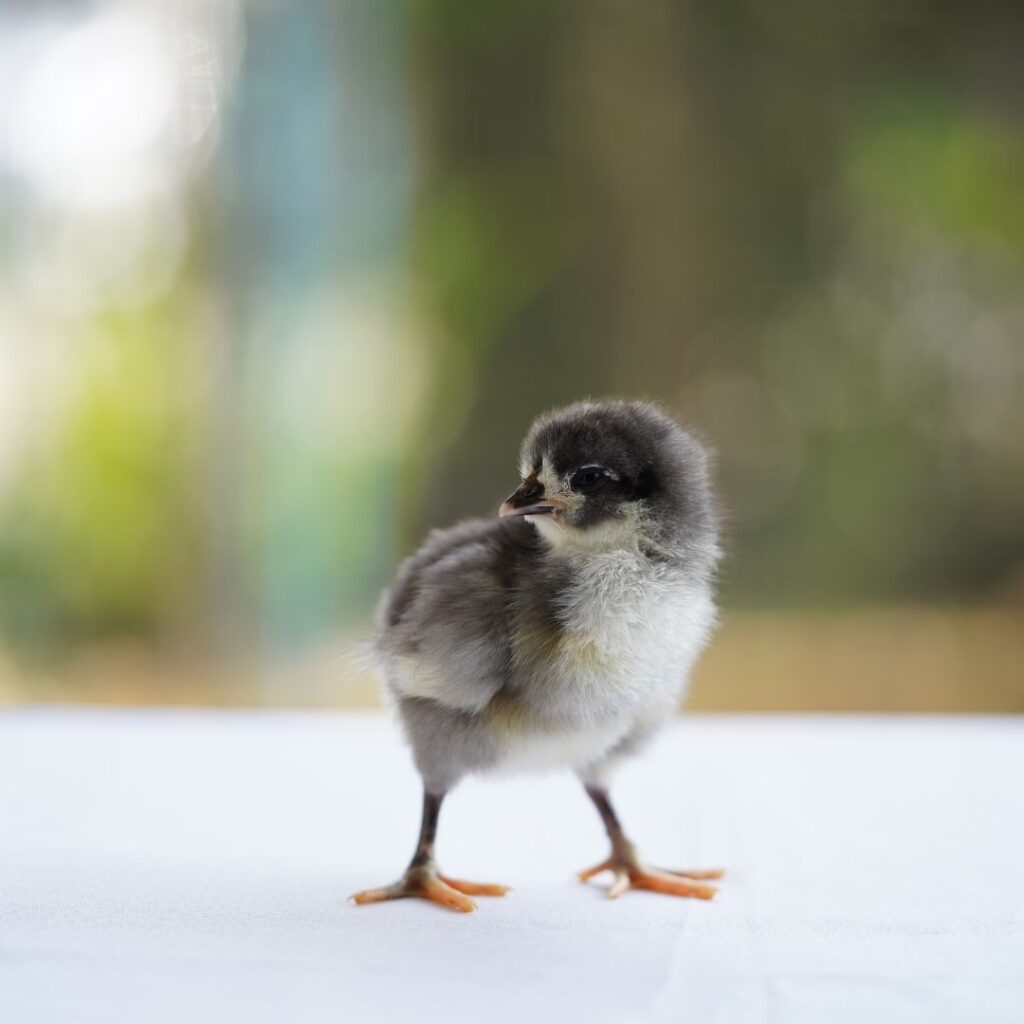
Breed Variations (Other Colors)
There are multiple color variations of the Australorp chicken breed. While the American Poultry Association only recognizes one variation, the Black Australorp:
Black Australorp – Feathers are shiny greenish black with a sheen sometimes described as iridescent. Along with their distinctive plumage, they also have large red combs that add to their regal appearance.
Black Australorp chicks are similar to the Blue Australorp chicks but have more dark feathering (downy fluff).
The Australian Poultry Society recognizes one additional color in their breed standard.
Resource: The Australorp Club of Australia Inc.
Blue Australorp
*note: other sources reference a White Australorp variation recognized in Australia; however, no supporting information could be found (even Wikipedia states no citations). Be on the lookout for the White Australorp in future updates.
South Africa Poultry Club has (in addition to the Black and Blue )
- Buff
- Splash
- Wheaten Laced
- Golden
Regardless of color, all Australorps are well-known for their large size and soft feathering. They belong to the heavy breed, soft feathered English type classification.
personality; the Australorp Chicken Breed
Australorps are very friendly chickens that get along well with both people and other animals. They are calm, docile chickens.
They are not known for being skittish or flighty and often approach humans instead of running away from them.
Australorps make great pets for children or anyone who wants a docile chicken that enjoys being handled.
They do well in a backyard flock as well as commercial operations.

Is this Breed Friendly to Other Chickens?
Suppose you are raising chickens and looking to have a mixed flock. In that case, you want to consider the personalities of each of your breeds.
Australorp chickens are easy-going and will get along well with other chickens, including not picking on smaller chickens in your flock.
While Australorp chickens are known for being a docile breed, they can be bullied by a more aggressive breed of the same size.
It’s a good idea with any breed of chicken to have more than one of each breed in your flock. For that reason, we suggest a few chicks, more specifically, 2-3 Australorp chickens if you add this docile breed.
There’s also the consideration of a large breed rooster with a small breed hen; this can be dangerous for the smaller hen.
Are These A Noisy Breed?
Not at all. These chickens are quieter than most other breeds, with the exception, of course, when your Australorp hen is laying eggs.
Australorp Hens; Egg Production
The egg production of the laying hens is impressive. After all, they were bred specifically for this reason. While the days of breaking records are behind us, they are impressively laying eggs of approximately 200-280 light brown, large eggs per year.
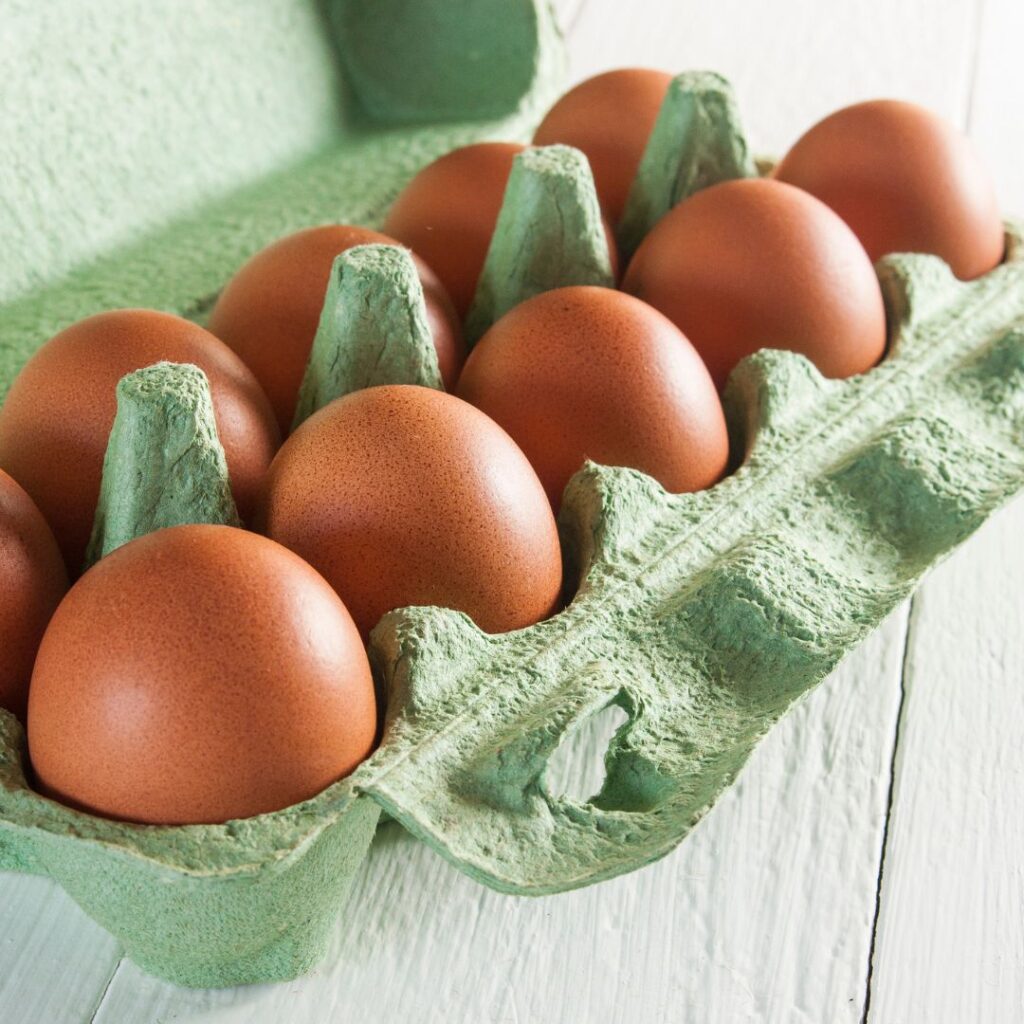
How Soon Will Egg Laying Start?
Like most larger chicken breeds, you can expect to see your light brown eggs around the 20-week mark. However, always have your nesting boxes prepared earlier. You want to give your laying hens a chance to get familiar with their spot for laying eggs. It also pays to be ready for the early layer.
Find out more about how long chickens lay eggs here.
Are Australorp Chickens Dual Purpose Birds?
The Australorp is a dual-purpose chicken, meaning they excel at laying eggs and producing meat. While their egg-laying ability has declined over time, they are still known as excellent egg layers, producing around 280 eggs per year on average.
As for meat production, the Australorp may yield less meat than other chickens, but they are considered a good choice for both eggs and meat. The Australorp can be an excellent choice for those wanting a dual-purpose breed. Just keep in mind that their primary focus is on egg production.
The Chicken Coop Size For Your Australorp Chickens
Size/Space – When choosing the size of your Australorp chicken coop, a good rule is to provide 10 square feet per bird. Giving them plenty of room to move and spread their wings helps keep them physically healthy and prevents overcrowding and potential fights among the flock.
Of course, you also want to ensure that the coop is well-constructed with weatherproof materials. This will ensure the comfort and safety of your chickens in both hot and cold temperatures.
Whether you decide to build your coop or purchase one that has already been constructed, keeping these guidelines in mind will help create a happy home for your Australorps.
Perches/Roosts – When setting up a chicken coop, where you place the perches is essential. It’s best to position the perches toward the back of the hen house, away from windows, doors, and nesting boxes. This helps to keep chickens out of harmful drafts and prevents them from sleeping in the nesting boxes at night. Additionally, ensure that the perches are securely attached to the coop walls and installed for maximum comfort and safety.
When determining how many perches you need, each chicken should have at least one foot of space on the bar. However, it’s always better to provide more space if possible.
Never set chicken perches/roosts higher than 4 feet off the ground – this can increase the chance of injury for your chickens. Keeping these tips in mind ensures that your chickens have comfortable and safe perching options in their coop.
Nesting Boxes – When it comes to chicken owners, one thing is sure: your girls need a nest box to lay their eggs. But what makes the perfect nest box?
The standard size for popular chicken breeds like Australorps, Leghorns, Sussex, and Plymouth Rocks is 12 inches wide, deep, and tall. This box provides ample space for your ladies to make themselves comfortable while laying their eggs. And remember your flock size!
Generally speaking, one nesting box is needed for every four hens. The nesting box ensures that every chicken has enough room to lay its eggs without feeling crowded or uncomfortable. Changing the litter (bedding) frequently is also important to keep it fresh and reduce the breakage of those precious eggs.
Following these guidelines, you can provide the perfect nesting environment for your chickens and collect plenty of fresh eggs. Happy egg hunting!
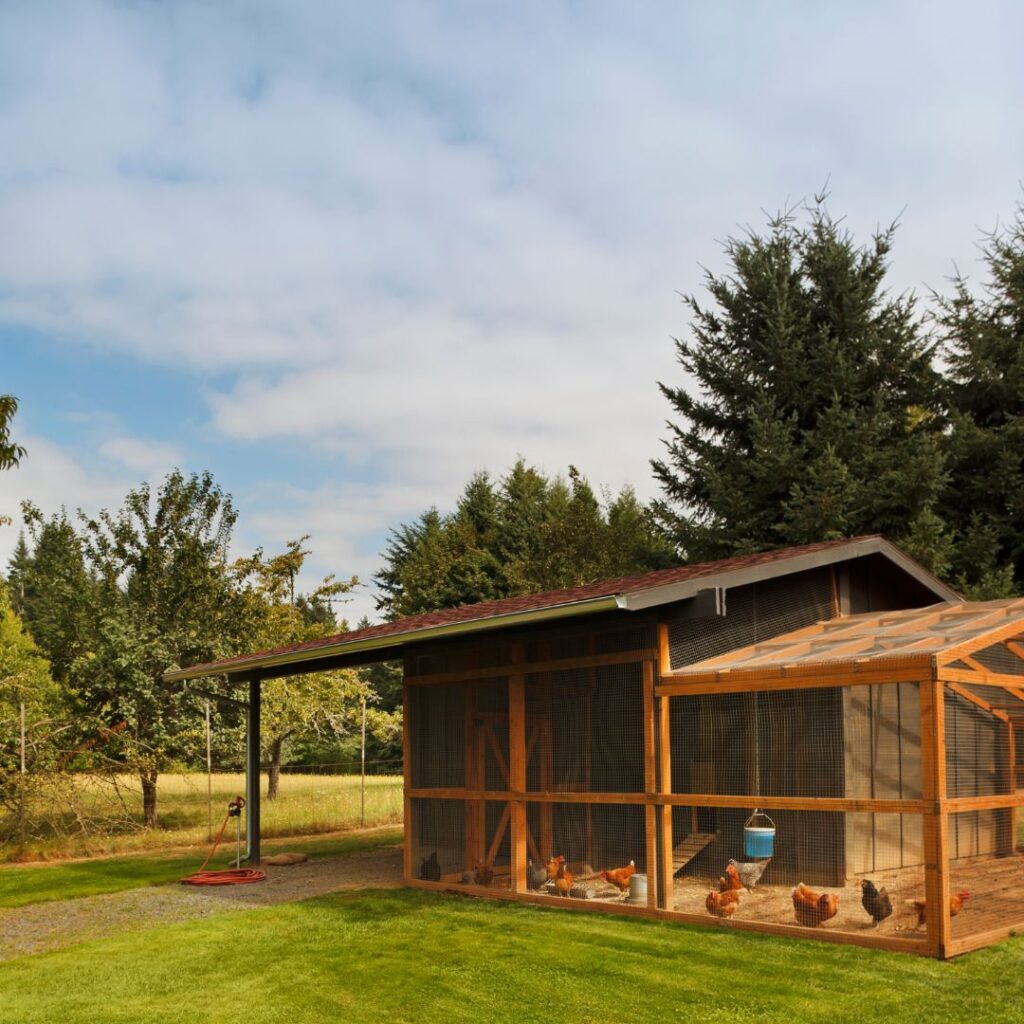
Chicken Run Size and Needs for Your Flock
Space – As any chicken owner knows, these animals are more than just a source of eggs. Chickens also have individual personalities and enjoy activities like dust bathing and foraging.
To keep your chickens content and healthy, providing them with enough space for their natural behaviors is essential. While smaller breeds may do fine in a coop with 6-8 square feet per chicken, larger breeds like Australorps need a minimum of 10 -15 square feet per chicken in an outdoor run. The more space you can give them, the better!
If you let your chickens’ free range during the day, they’ll have less need for a large run.
Don’t skimp on room for your chickens – by creating a comfortable living space that meets their needs; they’ll reward you with plenty of delicious eggs.
Shelter from harsh elements- As a chicken owner, it’s essential to provide your feathered friends with an outdoor run that allows them to enjoy the fresh air no matter the weather. One option is to have a tarped or lean-to area that provides shade from the hot sun and protection from rain and snow.
In the winter, ensure you have a shoveled portion of the run so your chickens can move around comfortably and easily access their shelter.
Providing these elements in your outdoor run helps keep your chickens happy, healthy, and thriving all year. Remember, happy chickens lay more delicious eggs!
Bonus: placing a tarp over the run closer to the entrance of your coop also provides added shade indoors and protection from harsh cold winds in the winter.
Fence Height – When it comes to fencing for a chicken run, safety for the birds should be your top priority. Make sure the height of your fence is tall enough to keep out any potential predators, as well as prevent the chickens from flying out.
A good rule is to plan for a minimum fence height of six feet. Of course, every flock is different – you may find that one chicken is an exceptionally talented flier. Your high flier may need even higher fencing to contain them.
It’s also important to check your fencing regularly for holes or damages that could let in predators or allow chickens to escape. Also, be sure to use the proper materials. A predator can easily breach a flimsy fence.
If you live with overhead predators like hawks, you may also need to add something like hardware cloth to the overhead area of the run.
These precautions ensure you’ll have happy and safe chickens in their secure enclosure.
Dust Bath – Providing dust baths for your chickens is important not only for their physical health but also for their overall happiness.
A dust bath area should be a part of every chicken coop and filled with non-toxic materials, like sand or wood ash.
Dust baths help eliminate parasites and mites, keep feathers clean and in good condition, and provide entertainment for your chickens.

How Are Australorps For Free-Range Flocks?
Australorp chickens are known for their hardiness and ability to tolerate confinement, but they still benefit from free-range time.
These larger chickens tend towards obesity if they don’t get enough exercise, so letting them explore the yard and hunt for bugs and other treats is a healthy addition to their diet. In addition, these active birds enjoy the mental stimulation of searching for food and scratching in the dirt.
So while Australorps are well-suited to confined living, giving them some space to free-range and forage can only enhance their overall health and happiness.
Are The Australorps Good Urban (City) Chickens?
Despite their large size, they are surprisingly well-adapted to confined spaces and have a quiet, gentle temperament. Given a good-sized outdoor run area, you should be able to keep your chicken in good health while still confined.
These qualities make them an excellent choice for urban and suburban areas where noise may be more of a concern.
But that doesn’t mean they don’t enjoy the occasional foray into the yard – like all chickens; they love to stretch their wings and scratch in the dirt.
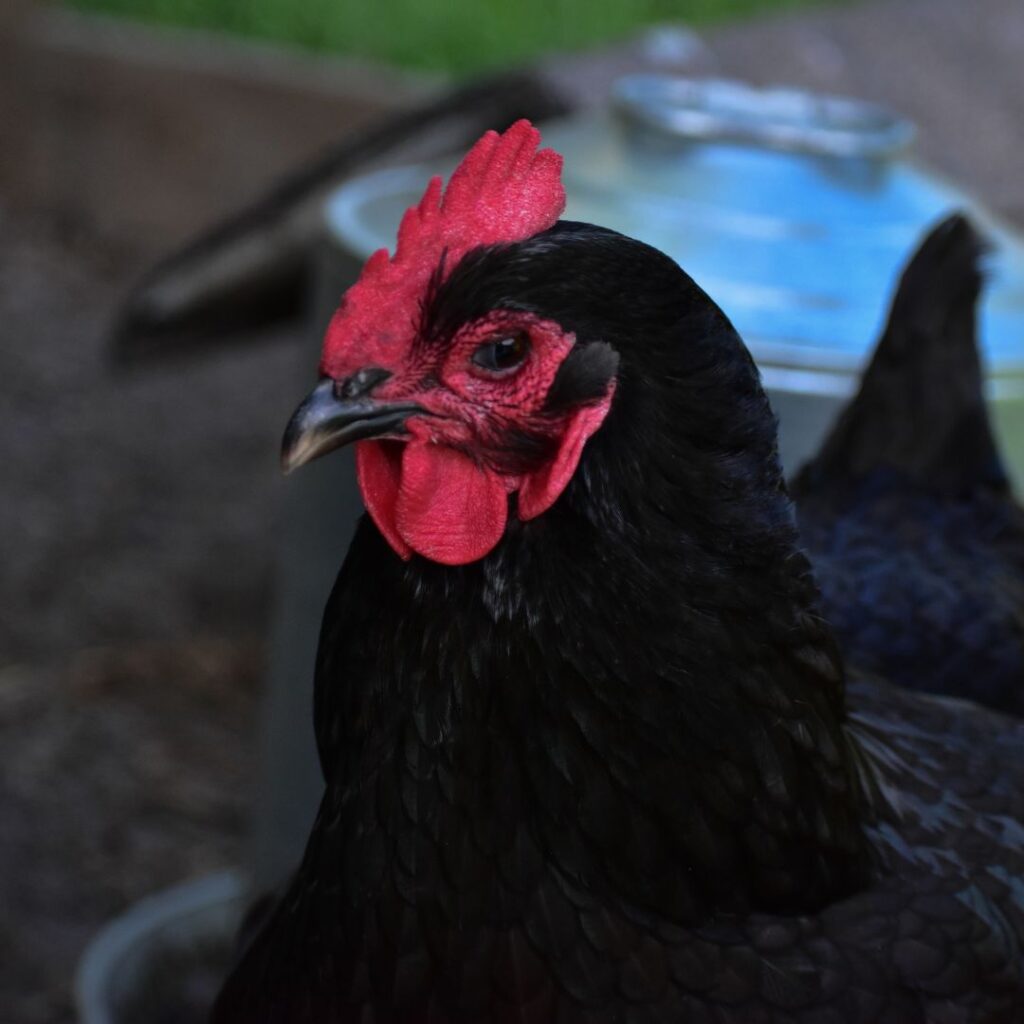
Are the Australorp Chickens Cold Hardy? Is heat Tolerant?
The Australorp chicken is a popular choice for backyard chickens due to their large size and delicious eggs. However, many people wonder how they fare in extreme temperatures. The good news is that Australorps are indeed cold-hardy, often able to withstand temperatures below freezing with proper shelter and care.
They also have some heat tolerance, but it is important to provide shade and plenty of cool, fresh water during the hot summer. The Australorp’s thick feathers and impressive size make them well-equipped to handle most climates. For those looking for a hardy bird with excellent egg production, the Australorp is a great choice.
Winter/Cold Weather Chicken Coop Preparation
Australorp chickens, primarily our favorite Blue and Black Australorp, are known for their cold hardiness thanks to their larger size and thick feathering. However, their distinctive red combs do make them susceptible to frostbite. As a result, they must have extra protection in the winter months. The best way to provide this is to provide a secure coop area protected from wind and moisture.
Winter Coop Prep – As the weather starts to cool, it’s important to ensure your chicken coop is prepared for winter. Insulation is crucial for keeping your chickens warm and draft-free. Ventilation is also critical, as moisture can quickly build up in a tightly insulated coop.
Equally important is ensuring your chickens have a place off the ground to roost protected from the elements. You’ll find your chickens huddle together more often in winter to keep warm, so adequate roost space is important.
Feed and Water Containers – Winter can be challenging for chicken keepers, as maintaining a supply of fresh, unfrozen water for your flock becomes increasingly tricky.
One solution is to bring fresh water to your chickens more frequently, ensuring they always have access to non-frozen water. Another option is investing in a heated waterer or bowl warmer. However, these products can come with a higher price tag.
Ultimately, the decision comes down to your circumstances and budget – but a heated waterer may prove to be a valuable investment for those busy or working during the day.
Regardless of your chosen strategy, regular attention to your chickens’ water supply is crucial for keeping them healthy during the colder months.
Frostbite – Winter weather can pose various challenges for chicken farmers, but one issue that often gets overlooked is frostbite.
This painful condition can affect any part of the bird exposed to frigid temperatures. Still, chickens with large combs – particularly roosters – are especially susceptible. Thankfully, there are steps that poultry owners can take to protect their flock from frostbite.
One straightforward solution is to apply petroleum jelly or another waterproof barrier to the comb and wattles before cold weather sets in. Another option is to regularly check on chickens during winter storms and bring them indoors if necessary. This is another important reason to be sure your coop is well-ventilated. Reducing indoor moisture can prevent your Australorp chicken from frostbite.
Just like when caring for any living animal, paying attention to their needs during extreme weather can go a long way towards preventing issues like frostbite and ensuring the health and well-being of your flock.
Winter Runs – Winterizing your chicken run can be a manageable task. One important step is shoveling the run area so your flock can safely access the run and roam around during the day.
It’s also helpful to have a section covered, providing shelter from rain and snow. While chickens aren’t usually bothered by snow on the ground, they can easily suffer from frostbite and decreased body temperature if their feathers become wet.
So, it is important to ensure their living space protects against the elements during the colder months. Keeping your chickens dry will ensure they can maintain their body heat and stay healthy.
Winter Treats – Winter brings colder temperatures, and while it may be raining or snowing outside, that doesn’t mean our feathered friends can’t enjoy some warm treats! Grains like oats and corn can be cooked and mixed with fruits to create a satisfying meal for your chickens.
Your Australorp chickens will also love the taste of warm apple sauce, cooked fruits, and mashed vegetables like carrots or yams.
It’s important to remember that treats should only make up 10% of your chickens’ daily feed. By offering these warm treats during the chilly months, you provide enrichment for your feathered friends and give them an additional source of warmth in the cold weather.
Prepare your coop and chickens for harsh winter weather, read more here about how to do this.
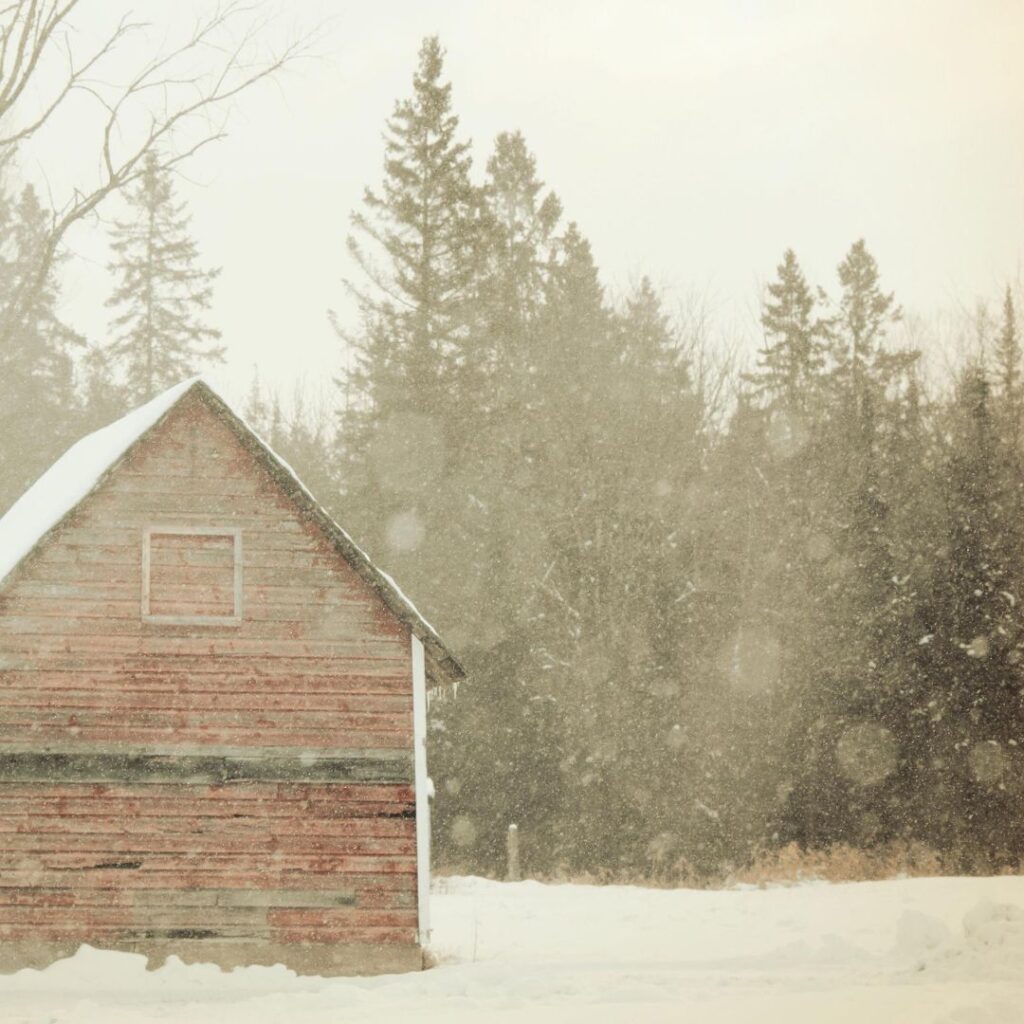
Summer/Hot Weather Weather Chicken Coop Preparation
The Australorp is great for backyard chicken keepers living in warm climates. Their dark feather, especially on the darker Black Australorps, makes them less heat-tolerant than some chickens. Still, they can easily withstand temperatures up to 95 degrees Fahrenheit with proper precautions. Providing shade and ensuring they always have access to fresh water will ensure their comfort and prevent heat stress.
Coop Prep ( hen house) – As temperatures rise, it’s important to ensure that your coop has the necessary provisions to keep your chickens cool and comfortable.
Providing shade is vital, whether adding a canopy or pergola to the coop itself or planting trees nearby for natural shade. In addition, proper ventilation is crucial in minimizing stagnant hot air in the coop. You can improve ventilation through exhaust fans; even using secure screen doors and windows screen doors can provide increased airflow.
Additionally, ensure that their bedding is dry to prevent any excess humidity from building up in their living space.
Sheltering the Run – As we all know, shelter is crucial for happy and healthy chickens. And while we typically think of winter as when shelter becomes important, we should remember summertime protection.
A tarp or shade cloth near the coop can relieve rain and excessive heat. This can significantly impact reducing temperatures inside the coop, creating a cooler and more comfortable environment for your feathered friends.
Summertime rainy conditions can quickly turn a chicken run into a muddy mess. Muddy and wet conditions make it uncomfortable for your flock and can create hygiene issues.
So remember to include shade and rain cover in your summer poultry preparations – your chickens will thank you!
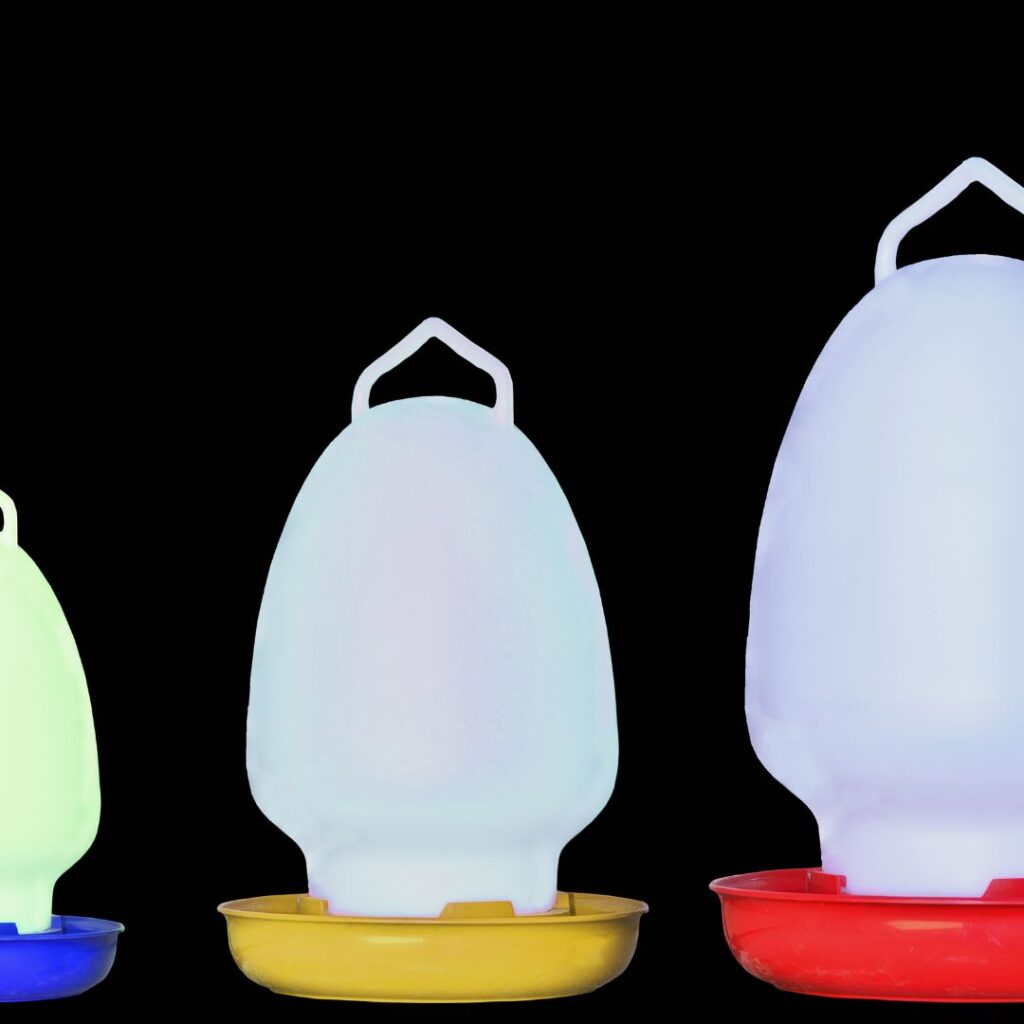
Fresh Feed and Cool Water – Keeping water cool and fresh for your chickens is vital for their well-being. Still, it can also be challenging during the hot summer months. An easy solution is to add ice cubes to their waterers regularly. You can even provide an ice water bowl to dip their beaks in for extra refreshment.
Keeping feeders out of reach from unwanted pests like ants is also essential. Placing them on a cement block or hanging them from a chain can help ensure that only your chickens can access their food.
Summertime is not ideal for storing grains in large quantities. Limit your ‘stockpile to what your flock will eat within a couple of weeks at a time. Storing grain in hot, humid weather invites buggy feed problems.
Treats For Hot Days – If you’re looking for a fun way to cool off your chickens on a hot day, frozen treats are the way to go. Not only will they provide a refreshing, icy snack, but the process of pecking at the frozen treat can also be an enjoyable activity for your flock.
To make your frozen chicken treats, fill a pot with water and add fruit and vegetable scraps from the kitchen or garden. Please place it in the freezer, let it set overnight, freeze it into a giant ice cube, and then set it out for your chickens to enjoy.
It’s a delicious and inexpensive way to beat the heat and entertain your birds. Plus, you’ll also be reducing food waste.
What Is The Lifespan Australorps Have?
These lovely birds typically live for 6 to 10 years, with an average lifespan of around seven years. Of course, individual chickens may live longer or shorter lives depending on factors such as diet, exercise, and overall health.
Egg laying can take a toll on a chicken’s body, so it may have a shorter lifespan if they are consistently a high-producing layer. We recommend allowing your hens to take their usual winter break.
You can expect your Australorp chickens to provide years of enjoyment (and some delicious eggs) with proper care and attention.
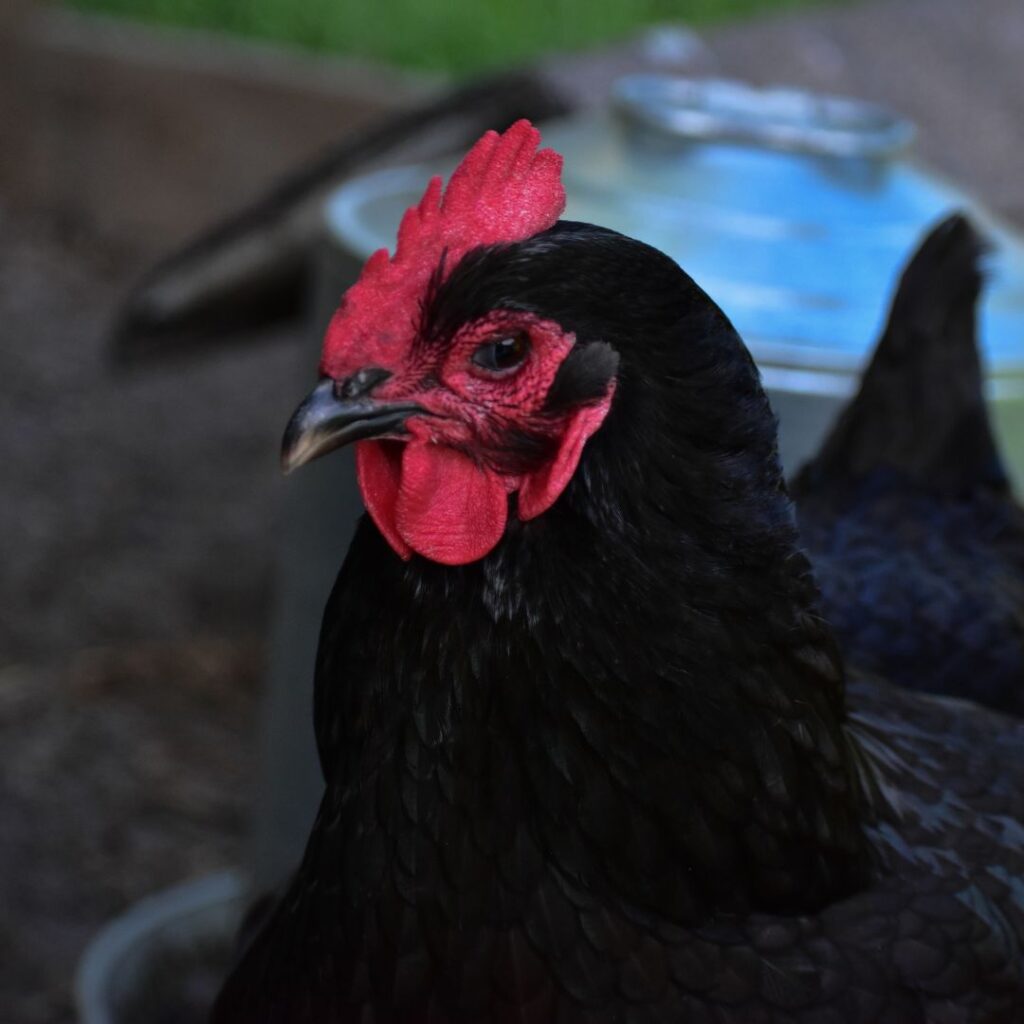
Is The Blue Australorp Breed Right For Backyard Chicken Lovers?
If you’re a backyard chicken enthusiast, consider the Australorp breed for your flock. These very large birds are known for their delicious eggs and are good at free ranging. Although they can grow quite large, the Australorp chicken is an easy-going breed, typically docile and friendly with humans. In terms of egg production, these chickens lay an impressive amount of extra-large or jumbo eggs. However, they tend to slow down during colder months or when molting. All in all, the Australorp chicken offers a lot for backyard chicken lovers to love.
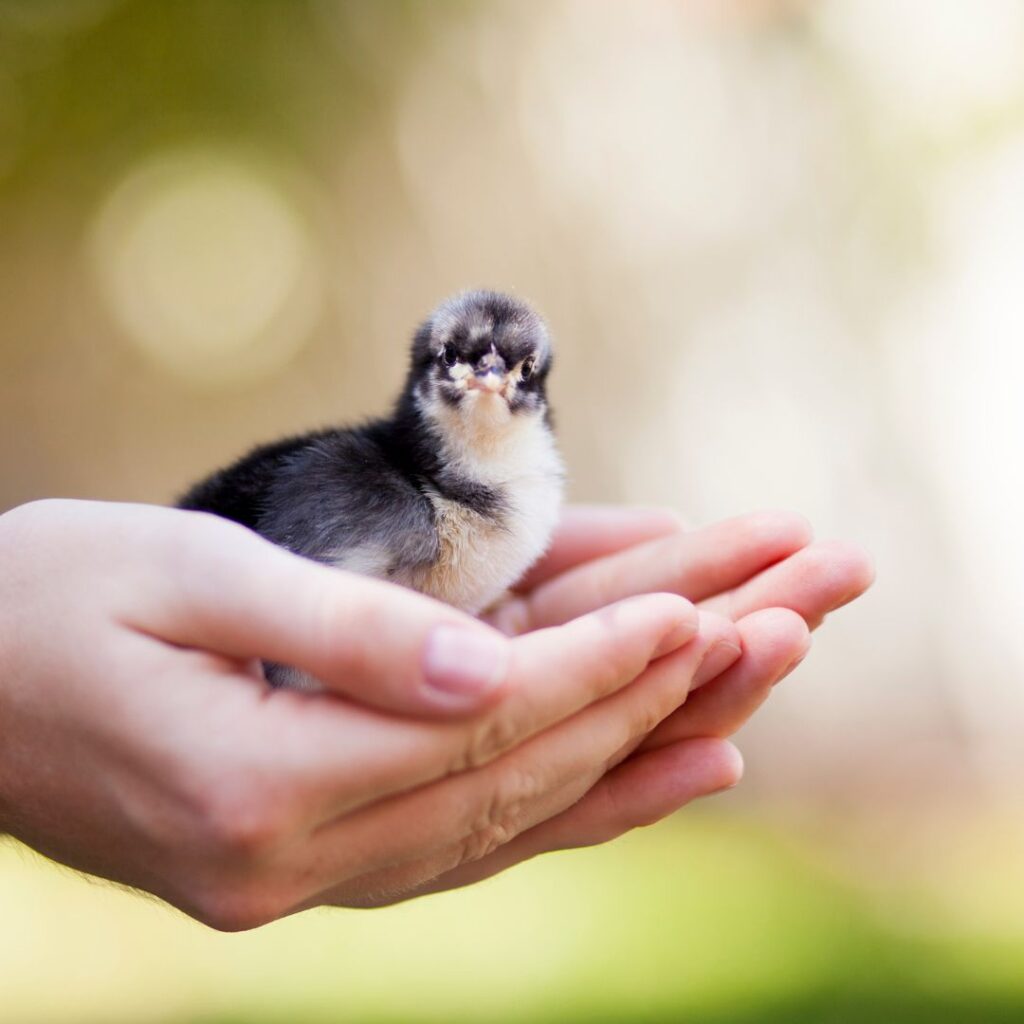

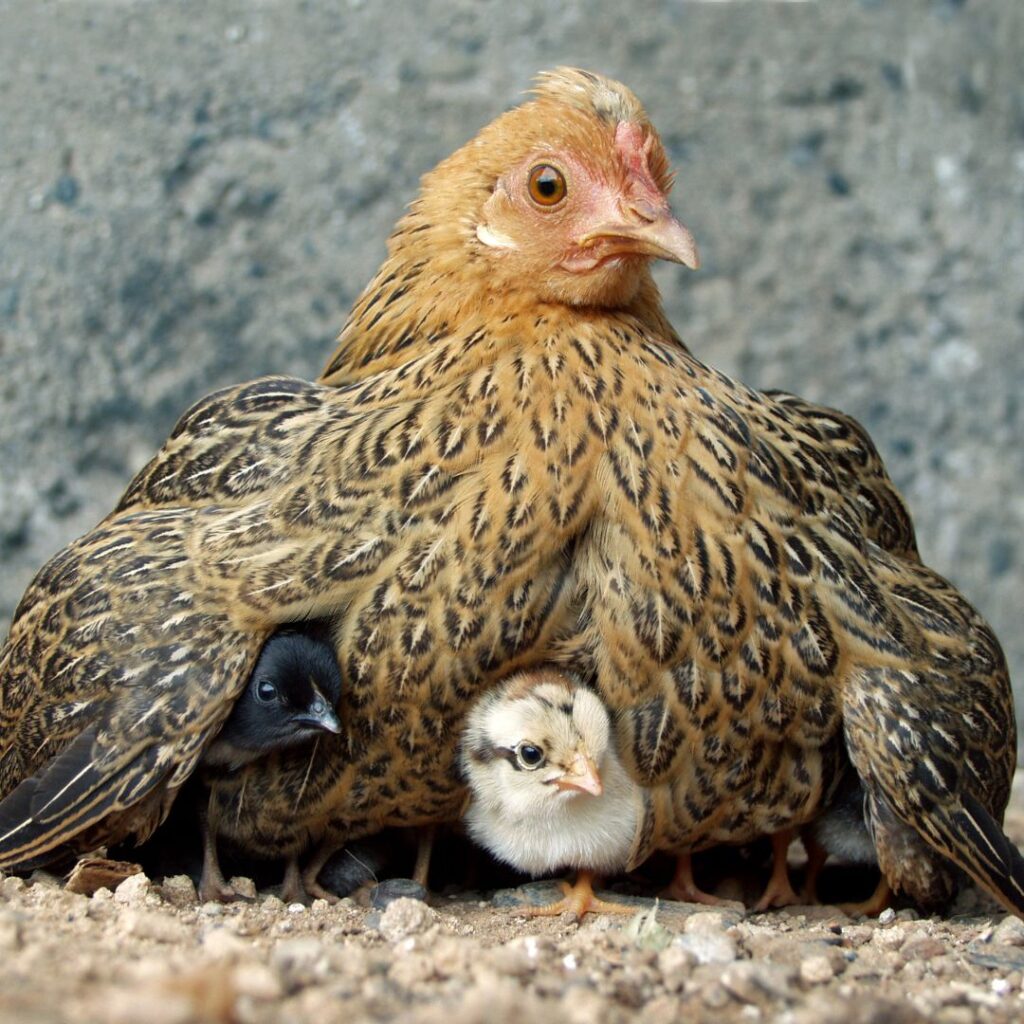
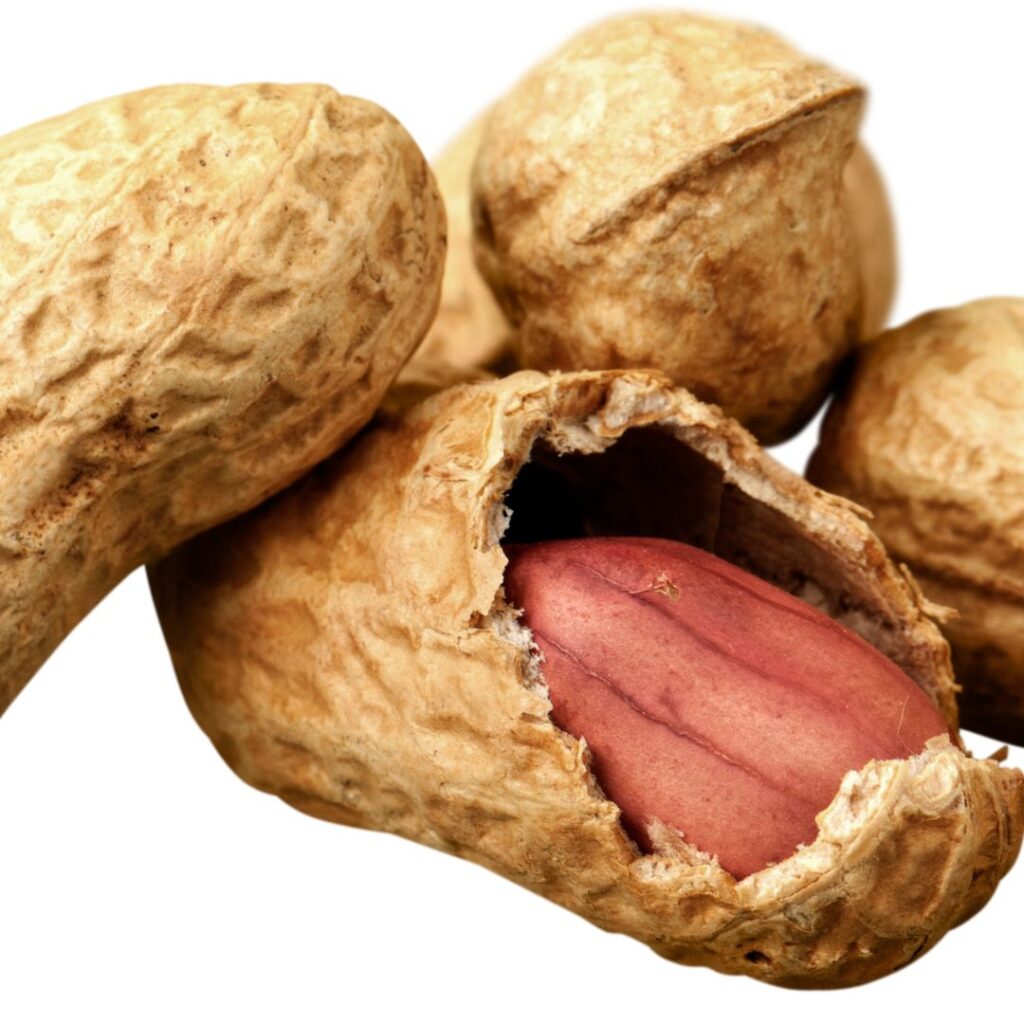
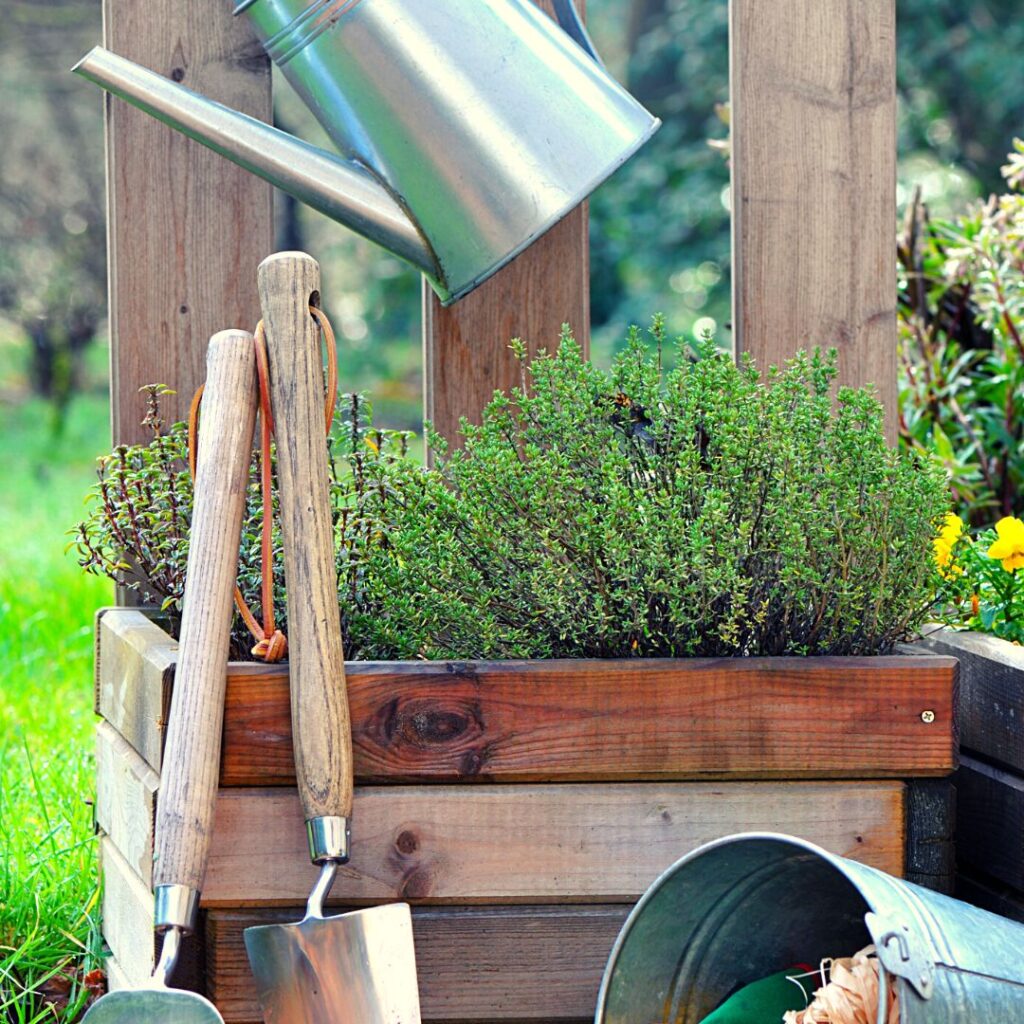
Pingback: 15+ Best Egg Laying Chicken Breeds; Qty, Color, Size Of Eggs
Pingback: What chickens can Teach Children, A Great Pet Choice - Gilmore's
Pingback: Chicken Care In Winter Months; Warmth & Health Of Flock - Gilmore's
Pingback: 18 Cold Hardy Chicken Breeds For Harsh Winters - Gilmore's
Pingback: Speckled Sussex Chickens; Is This Breed Right For You?